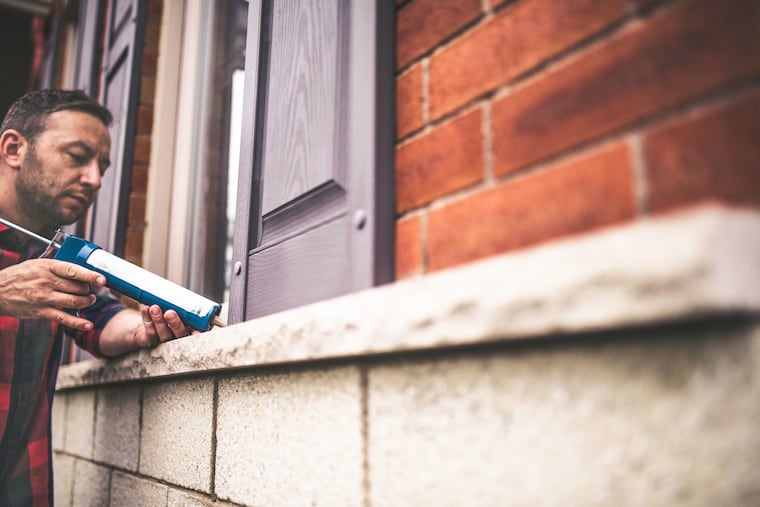Here’s what you need to do now to prepare your house for winter
“About 88% of deficiencies we find in home inspection are due to deferred maintenance,” one expert says. Fall is the time to jump on repairs.

As the Philadelphia region bursts into a rainbow of colors, most homeowners are focused on raking leaves. But before winter sets in, there’s a long list of other annual chores to do.
Fall is the perfect time for a whole-house maintenance check. You can make sure the summer heat didn’t cause any damage, as you prep the house for the winter cold. Regular maintenance keeps your house safe and heads off costly emergency repairs.
But weather shouldn’t be your only incentive to inspect and fix.
“About 88% of deficiencies we find in home inspection are due to deferred maintenance,” said Kathleen Kuhn, president of HouseMaster, of Somerville, N.J., one of the largest home inspection franchisors in North America.
If an inspector finds problems in a house on the market, Kuhn said, “that means the homeowner either must renegotiate the price, spend money on repairs, or, in some cases, the buyer will walk away.”
To help head off trouble, stay on top of maintenance. Here are some tasks that HouseMaster recommends doing every fall.
» READ MORE: How to lower your utility bills as the weather gets colder
Your yard
Check your window wells and storm drains for debris or other blockages.
Repair any driveway cracks and/or heaved or settled walkways.
Trim your trees and shrubs, particularly any limbs too close to the house.
Check — ideally during a rainstorm — that all rainwater drains away from the foundation.
Clean and put away your summer furnishings.
In areas subject to freezing temperatures, drain and store your garden hoses.
“Water is the number one culprit when it comes to big issues,” Kuhn said. Make sure water is running away, away, away from the foundation.
The exterior of your house
Check the weather tightness of all exterior surfaces and components.
Caulk and seal all joints in the siding and around windows and doors.
Look for deterioration of painted or finished areas. If it’s too late for a full paint job, touch up bare wood surfaces with a primer and at least one finish coat.
Seal any foundation cracks.
Repair or improve weather-stripping at exterior doors and windows as needed.
Reset storms and screens where required. Check window sills for signs of water damage.
Look for any signs of insect or pest activity, particularly at the foundation and any wood close to the ground.
Check your stairs and rails for sturdiness.
Make sure your shrubs or mulch do not block any air intake or exhaust vents for heating or ventilation systems.
Check for damage to your lighting fixtures.
Your roof
For the roof inspection, it’s best to use binoculars, and hire a professional to make repairs.
Check for loose, damaged or missing roofing.
Look for signs of moisture buildup or damage in the eaves.
Inspect the condition of the chimney and roof vents.
Check flashings, which cover any opening or gap on the roof, for signs of lifting or damage. Repair or seal as needed. “Most roof leaks are flashing problems,” Kuhn said. “Leaks can lead to mold and other problems.”
Clean gutters and downspouts. If gutters back up, Kuhn said, water can freeze and form ice dams on the edge of the roof, causing water to leak into the house and damage walls, ceilings, and insulation.
» READ MORE: DIY home improvement projects you can do in the winter
Your attic
Look for signs of roof leakage, particularly at chimneys, vents and valley areas.
Check ventilation openings for nests or other blockages.
Make sure the insulation is in good condition and provides even coverage.
Look for signs of excessive moisture buildup, such as mildew or discoloration on the underside of the roof.
Inside your house
Check for signs of roof or plumbing leakage.
Have any fireplaces or wood stoves and flues checked and professionally cleaned.
Check all smoke and carbon monoxide detectors. Replace batteries if more than a year old. Replace units more than seven years old.
Test ground-fault circuit-interrupters (GFCI) in bathrooms and the kitchen.
Clean or vacuum radiators or air distribution and return grilles.
Your HVAC system
Remove (or winterize) your room air conditioners. Check window sills for water damage.
Follow manufacturer instructions for the start-up maintenance of your heating system.
Change or clean heating system filters on your warm air systems (now and regularly).
Check your heating and cooling systems for any evidence of water leaks.
Check condensate drains and pumps on heating and cooling equipment for any signs of blockage.
Clean and test the humidifier, if you have one.
Have your heating and cooling systems serviced annually by a qualified serviceperson to keep them functioning properly and efficiently.
» READ MORE: Outlooks favor another mild winter for Philly, but at least it should snow this season
Your plumbing
Drain or insulate water lines that are subject to freezing.
Check the condition of your water heater. Follow the manufacturer’s recommendations for the temperature setting.
Check your plumbing system and fixtures for any evidence of water leaks or blocked drains.
Confirm that your sump pumps are working and have a free flow of water from the drain line.
If you find something that doesn’t seem right or you can’t repair, bring in a professional, Kuhn said. Engaging help earlier rather than later will usually save you money.